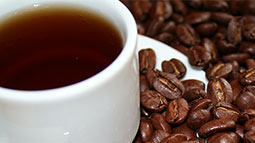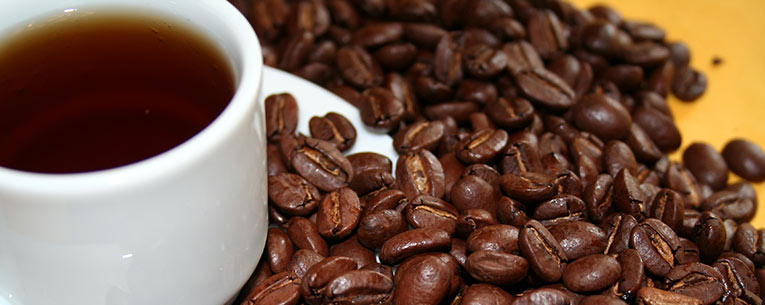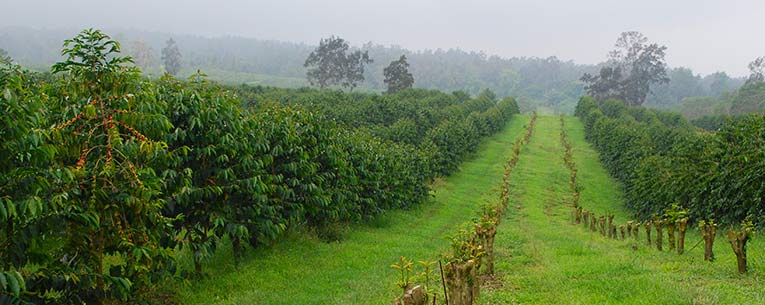If you’re a real Kona fan, you might consider attending The Kona Coffee Fest, Hawaii’s oldest food festival. Taking place in early November, the festival celebrates the culture, heritage, artistry and rich history behind the famous coffee. Farmers, artisans and more gather for the week-plus party.
Of course, if you can’t make it out to Hawaii, some of the farms and other coffee distributors sell their products online. Remember when we talked about that big can of supermarket Kona Coffee that could be purchased for just a few bucks. Well, there is a big difference between the fresh grown Hawaiian Kona Coffee and these blends. That’s right, these off-the-shelf beans are often blends or flavored coffees, where Kona comprises just 10 percent of the product. The difference in taste and price is mighty, about $6 per lb. for the lackluster blend vs. $35 per lb. for the 100 percent genuine article.2
Where Does Kona Gets Its Flavor?
From volcanoes. No, really.
Remember those all those small family farms we mentioned? Well, they’re clustered together on the slopes of the Mauna Loa and Hualalai Mountains — and their soil is flush with rich volcanic deposits, which contributes to Kona Coffee’s unique taste. From there, flavor can take many different directions, as everything from the weather to farmers’ equipment and roasting methods plays a role in determining the taste. Also, the manner in which beans are stored plays a big part in their relative freshness. Optimally, and especially if you’re travelling, you’re seeking out whole beans stored in air-tight containers. Freeze them and you could be looking at a shelf life of three months. What better souvenir? You’re not really going to wear that faux grass skirt anyways…
If you make it out to the Big Island, don’t forget that Hawaii is a state when traveling home. You don’t have to worry about customs, but you will need to enter the agriculture inspection line at their airport to spill the beans, so to speak.
How Should You Prepare Kona Coffee?
OK, pretend it’s National Coffee Day and you want to start your day right. You have the beans and you’re ready to brew. Now what?
Like all coffee, the water you choose to brew with will significantly impact the quality and taste your morning, afternoon or late-night pick-me-up. So choose spring water over tap water. Once you remove the beans from their air-tight environment and ground them up, go with a French Press (also called the “plunger method”). Boil water to 200F, allow to cool slightly, then pour the water over the ground coffee. Let it sit for a couple minutes, then plunge the grounds through the filter. Finally, enjoy!
Oh, and don’t forget to clean out your equipment thoroughly.
National Coffee Day (9/29) is an ideal time to try new coffees out. If you haven’t sipped 100-percent pure Kona Coffee, it’s time to go shopping. Or better yet, book a flight to Hawaii.
Related Articles
Mike Ward is a copywriter, family columnist and sometimes comic who lives in Richmond, Va. with his wife, two young kids and two mutts. He likes long road trips and rooting for losing sports teams.









Share this Page